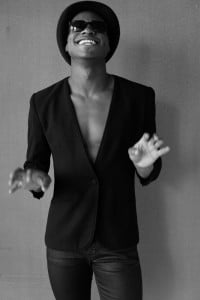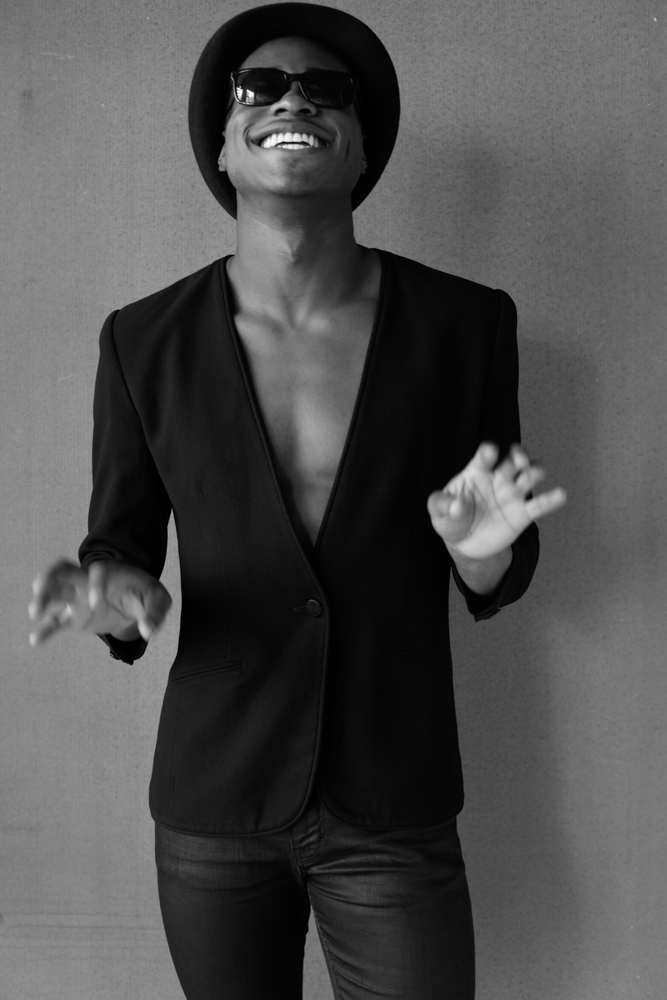While other students were busy shopping and sight-seeing after class, Uché Uba ’15 had one more item than most students on his fall 2013 Barcelona study abroad agenda: attend go-sees.
Anyone who has watched Top Model can tell you that go-sees — meetings with designers — are how fashion models land many of their jobs. At Stanford, Uba is a Human Biology-turned-Science, Technology & Society major; in the fashion world, he has modeled for Hugo Boss, Nike Track and famed Spanish label Llamazaras de Delgado.

“It’s artistic and it’s beautiful,” Uba, who spent this past weekend at Nike Headquarters modeling in a show that allowed global buyers to preview Nike’s upcoming designs, said of modeling. “And of course, I like clothes.”
Uba was 14 when a friend showed him an Adidas advertisement in a magazine. His friend, along with former San Antonio Spurs star Tracy McGrady, were both featured in an ad — and Uba’s interest in modeling was sparked instantly.
“I was like, you get to meet all these people, and it’s art at the same time?” Uba said.
While many of his peers had started to get jobs and buy nicer things for themselves, opportunities in Uba’s hometown of Beaverton, Ore., were limited.
“[Flipping burgers] was the last thing I wanted to do,” said Uba.
He submitted photos to a Portland agency and was quickly signed to a two-year contract. The agency soon turned out to be dubious, however, and Uba realized that in order to become successful, he would have to take it into his own hands to grow and learn as a model.
“I had to figure out the industry for myself,” he said.
Six months into his contract, Uba enrolled in Captivist, a modeling program started by a professional photographer, and spent three hours a day working out, learning about nutrition, how to walk and how to take pictures — both in front of and behind the camera. At the end of eight grueling months, he was given the opportunity to choose from one of Portland’s top three modeling agencies and signed with Option Model and Media, which he now considers his “family.”
Five years later, Uba, who is interested in biotechnology and marketing, has become an expert at balancing schoolwork and modeling.
“You become a master of time,” he said.
He said that he works out every day — not just for modeling, but also to maintain his own “spirits and endeavors.” When a job requires traveling, homework that can be done without Internet is saved for the plane. “Every 15 minutes,” Uba joked, is planned beforehand with the help of Google Calendar.
Keeping up with schoolwork, however, has not been Uba’s biggest challenge to modeling. As a man of Nigerian descent, Uba said that being an “ethnic model” that has posed the greatest difficulty.
“I was turned down at 95 percent of my go-sees [in Spain],” Uba said. A designer finally told him that because of his ethnicity, and the country that he was in, it would be much harder for him to land a job.
“If you see certain ethnicities in ads, then you know that society is ready to accept a person of that ethnicity as a public figure,” Uba explained. “It’s not that people [in Spain] aren’t ready to accept [black models]. It’s that the people in charge aren’t ready to give out that power yet, and there’s a trickle down effect.”
Uba said that he briefly regretted not studying in London or Paris instead, given that there is already a hub for black models in those countries. He persisted in his go-sees, however, and eventually found jobs, including a major winter editorial with Llamazaras de Delgado. The shoot, titled “Far Away from California,” has been reblogged on Tumblr hundreds of times since its January publication.
Ultimately, Uba said that he wants his career to change what people think about the world in a positive manner, citing Ivory Coast-born model Adonis Bosso’s work in breaking down barriers in the fashion world and actor Michael B. Jordan’s work in bringing race and gun-related issues to light through “Fruitvale Station.” While he is considering transitioning to acting to have a bigger influence on his audience, Uba’s modeling career is far from over.
“[What I love about modeling] is actually being part of something created,” he said. “When I see an amazing shot, I’m not thinking that I looked great. I’m thinking that the pieces, the scenery and the team came together in an extraordinary and creatively expressive way, [and] that’s why I’m proud of my work.”
Contact Grace Chao at gracewc‘at’stanford.edu.
